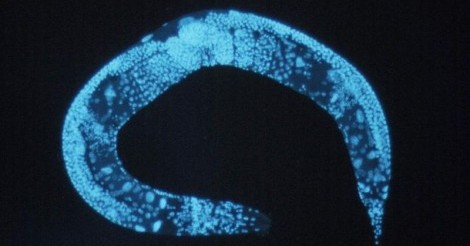
The tiny worm Caenorhabditis elegans has been a boon to science. Adult worms have a consistent number of cells, and we have been able to work out where each one comes from during the developmental process. They also have a consistent set of neurons, and the way that they connect to each other has been mapped out as well. So, naturally, someone reproduced those connections in a software simulation and got that running on a LEGO Mindstorm robot kit. The robot sensors were set up to correspond to certain sensory inputs on the worm. The end result is a robot that, on a coarse level, manifests some of the same responses to stimuli as the C. elegans worm.
Once the wow factor wears off, some of the usual artificial intelligence metaphysical questions arise. Is this robot a worm? As a biologist, I am going to say “no” to that one; biology still counts for something. Even a very accurate reproduction of the neurobiology is just that; there is more to a living creature than its nervous system. It cannot make new worms or even new LEGO robot worms. Is it alive? Again, I would say “no” for similar reasons. It does not eat or otherwise use its surroundings to obtain Gibbs free energy. Is it conscious? Ah, now we are getting somewhere! How you answer that probably depends on whether you think C. elegans itself is conscious. To the extent the actual worms are, then there is probably a case to be made for the consciousness of the robot as well.
What do you make of this robot? What questions does it raise for you, and how do you answer them?
Andy has worn many hats in his life. He knows this is a dreadfully clichéd notion, but since it is also literally true he uses it anyway. Among his current metaphorical hats: husband of one wife, father of two teenagers, reader of science fiction and science fact, enthusiast of contemporary symphonic music, and chief science officer. Previous metaphorical hats include: comp bio postdoc, molecular biology grad student, InterVarsity chapter president (that one came with a literal hat), music store clerk, house painter, and mosquito trapper. Among his more unique literal hats: British bobby, captain’s hats (of varying levels of authenticity) of several specific vessels, a deerstalker from 221B Baker St, and a railroad engineer’s cap. His monthly Science in Review is drawn from his weekly Science Corner posts — Wednesdays, 8am (Eastern) on the Emerging Scholars Network Blog. His book Faith across the Multiverse is available from Hendrickson.

Leave a Reply